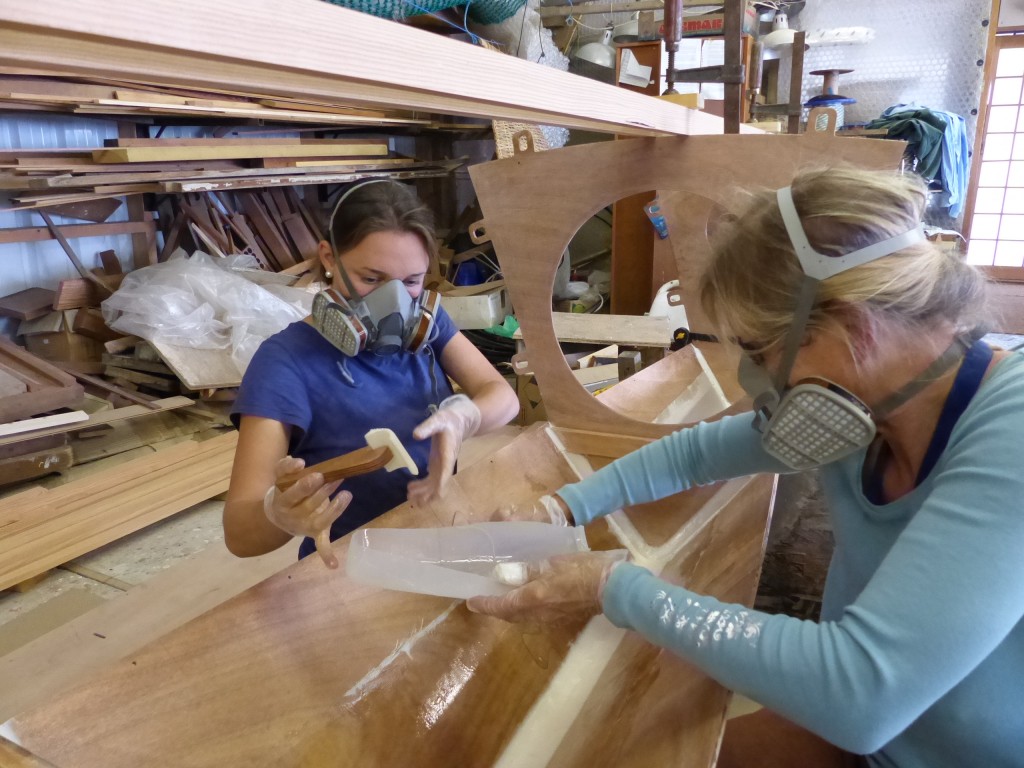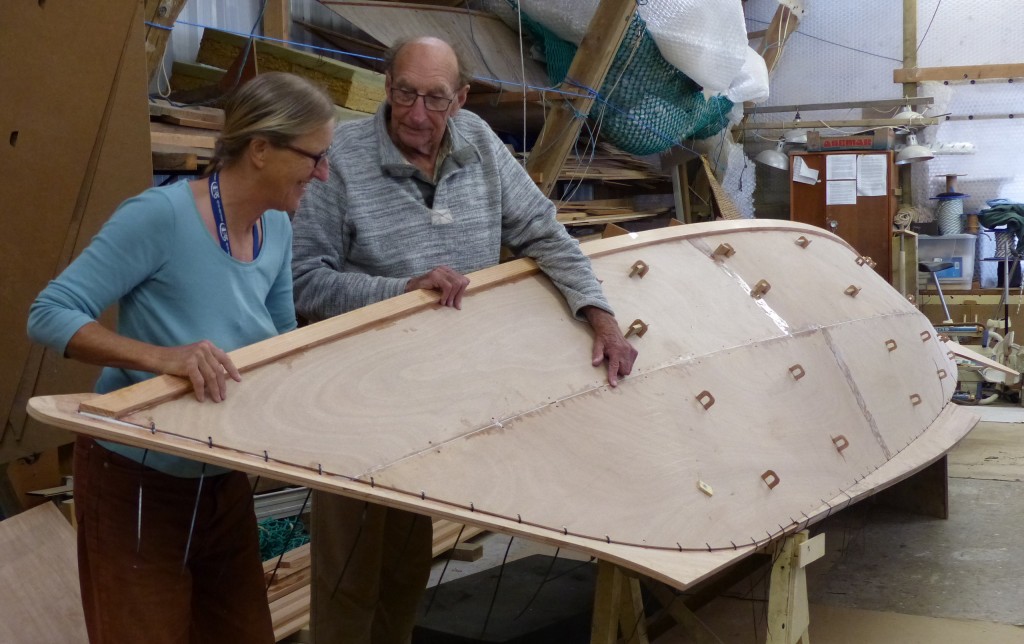Projects: Building the ultimate ‘trailer sailer’ with epoxy
Celebrating sixty years since he first journeyed across the Atlantic in his self-built catamaran, James Wharram is creating his ‘dream boat’: Mana 24. Here, James’s co-designer Hanneke Boon tells us all about this commemorative self-build kit.
Cornwall’s James Wharram is a bona fide celebrity in the catamaran community. In 1955 he claimed a place in history for sailing himself, two friends, a dog and 200 books to Trinidad in his self-built multi-hull, Tangaroa.
It was a pioneering voyage; James proved the ancient Polynesians were indeed able to travel the oceans via catamaran. Yet in the 1950s this wasn’t even a recognised form of sea travel. “James called the Tangaroa a ‘double canoe’,” says Hanneke Boon, James’s co-designer of many years. “At that time the word ‘catamaran’ wasn’t really known!”
Today his company, James Wharram Designs, is well-established as a leading designer of catamaran kits for the self-build market. To celebrate a full 60 years since James’s maiden voyage, they’re launching a new design – Mana 24. “It’s James’s dream boat!” laughs Hanneke. “At 23 feet six, it’s exactly the same size as the Tangaroa but a lot more sophisticated.”
Epoxy: transforming wooden boat-building
Interestingly, the main reason why James and Hanneke design and build kit boats at all is the advent of epoxy resin. The pair were introduced to epoxy’s potential when they saw Meade Gougeon describe using epoxy to coat, bond and seal wood at the first World Multihull Symposium in Toronto in 1976.
“Meade Gougeon presented a very well-researched paper about epoxy. James was impressed. He said ‘I’ll make boats like origami using this material!’”
However, it wasn’t until they met him again in 1979 at a HISWA symposium in Amsterdam that they were truly convinced that epoxy was the ideal boatbuilding material to make kit-building possible. “Meade Gougeon presented a very well-researched paper about epoxy. James was impressed. He said “I’ll make boats like origami using this material!”
Hanneke has no doubt that epoxy has completely transformed wooden boatbuilding and building in plywood in particular. “Epoxy has introduced a whole new element in fillet-making. It means that not everything has to be cut quite so precisely or so carefully bevelled.”
Mana 24: the boat you can keep at home
Mana 24 will sit in the middle of the James Wharram Designs’ Coastal Trek range. It is specifically designed as a ‘trailer sailer’ – a small, lightweight boat that can easily be stored at home (thus avoiding costly mooring fees) and taken to the water by trailer. It will be offered as a kit of pre-cut plywood parts and accompanying epoxy materials, making the building process much quicker than building from Plans. “James loves to think that within just a few months, anyone with simple tools and a practical bent can have their own boat in which to start having adventures,” says Hanneke.
Mana’s design is a deliberate hybrid of James’s and Hanneke’s many ideas and successes over the years. Reviving previously shelved plans for a 23 footer and drawing on elements from the company’s Tiki and Amatasi designs, Mana has a Wharram Wingsail Catrig and a more chined hull. “We’ve always wanted a boat with a more chined hull. Combined with a low-aspect keel it gives good lateral resistance and allows us to reverse the cabin space, giving a wider bunk aft,” says Hanneke. “When we started designing Mana 24, this just clicked.”
In fact, the whole boat has been carefully designed to maximise available space. Although she has just two single bunks in the hulls, the forward-placing of Mana’s main mast enables a dome tent to be set up on the deck – meaning the boat could easily accommodate a small family.
Stitch and glue
The hulls of Mana, just like all of the company’s other designs, will be a series of plywood panels which are ‘stitched and glued’ together using woven glass tape and WEST SYSTEM® epoxy fillets. She also has a ply keel, which Hanneke believes makes for a robust structure. “It forms the backbone of the boat, making it very strong when you beach it or when it’s on the trailer.”
“I’ve always used WEST SYSTEM epoxy; we build professionally with it and I’ve seen it proven time and time again in durability.”
The Mana kit will also include delivery of WEST SYSTEM epoxy, which Hanneke says should make it even easier to build. “I’ve always used WEST SYSTEM epoxy; we build professionally with it and I’ve seen it proven time and time again in durability.”
Passing mana to Mana 24
The Mana 24 kit should be available to buy in Spring 2016. At the moment, however, Hanneke is working with a team of volunteers to build a prototype. This will form the basis of the kit, so it’s very important that they carry out the build like a home boat-builder would.
“For example, it took us 37 hours to first coat and sand the inner faces of one hull with epoxy. So, for the kit, we’ve decided to pre-coat the inner hull panels and bulkheads,” explains Hanneke. “It’s easy for us to coat the ply professionally, giving a perfectly smooth finish and this alone should save home builders 70 hours on the total build.”
It’s fitting that James, Hanneke and their team are investing so much time and energy into this design. “To the Polynesians, mana is energy and spirit,” says Hanneke. “A tool can gain mana by being used by a craftsman. James and I and all of the volunteers working on this boat… we are all putting mana into her. We are passing our knowledge and experience into her design and our home-builders will pass on their mana when they bring her design to life.”
For more information about the progress of the Mana 24 prototype and the kit, visit the James Wharram Designs Facebook page.
To learn more about James Wharram Designs and its full portfolio, visit their website (http://wharram.com/site).
To discover exactly how WEST SYSTEM epoxy products can transform your boat building project, visit the West System International website.



